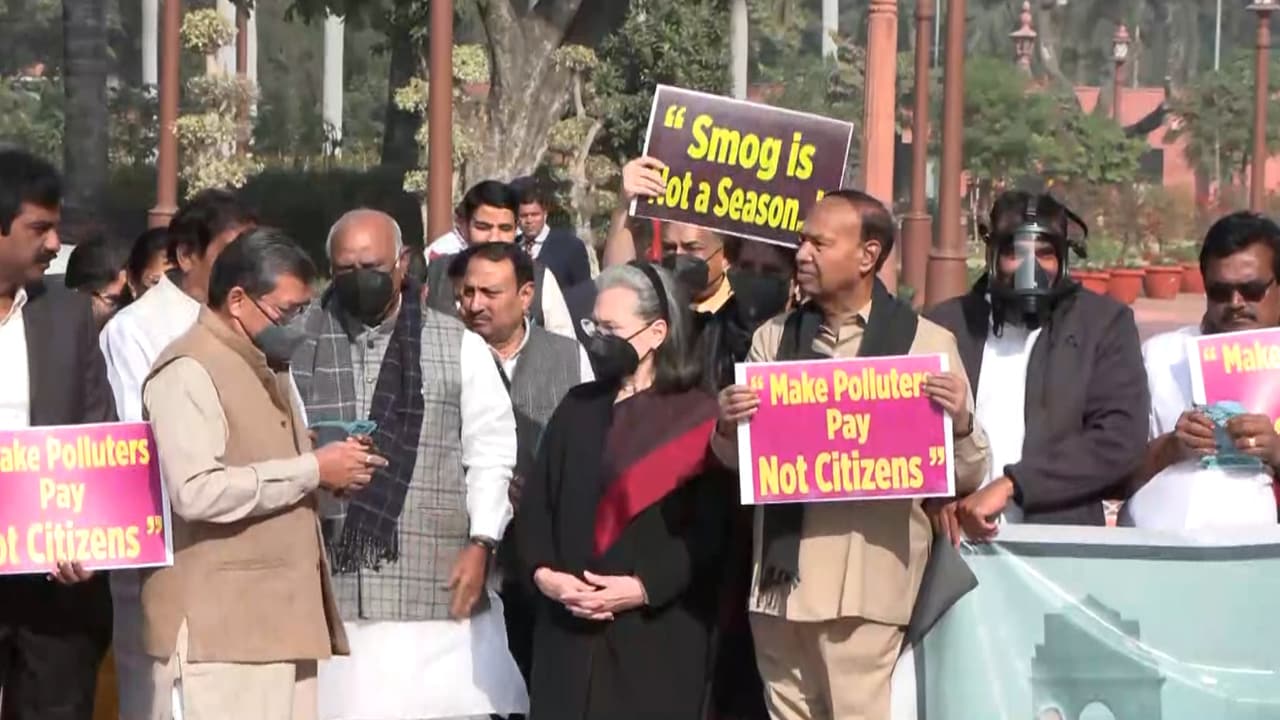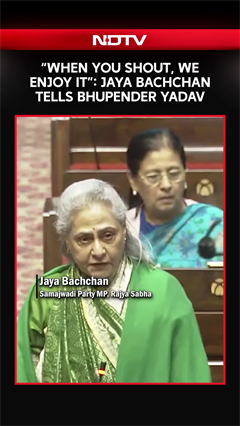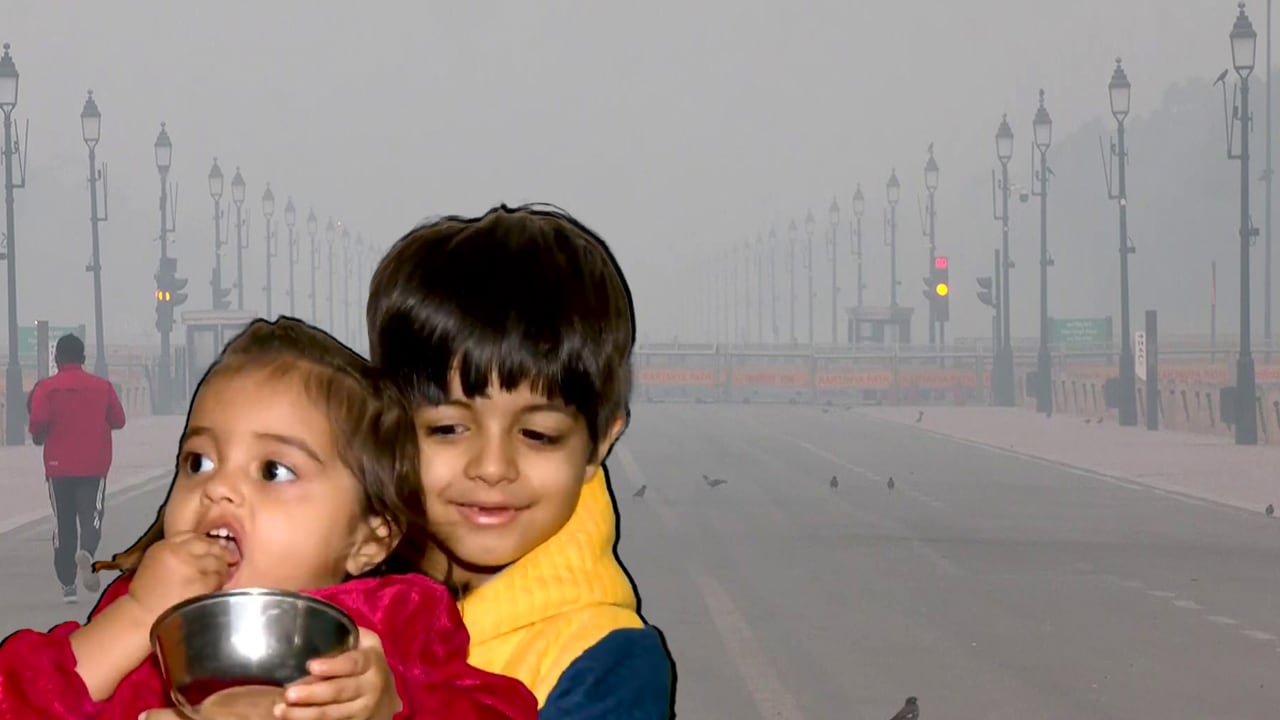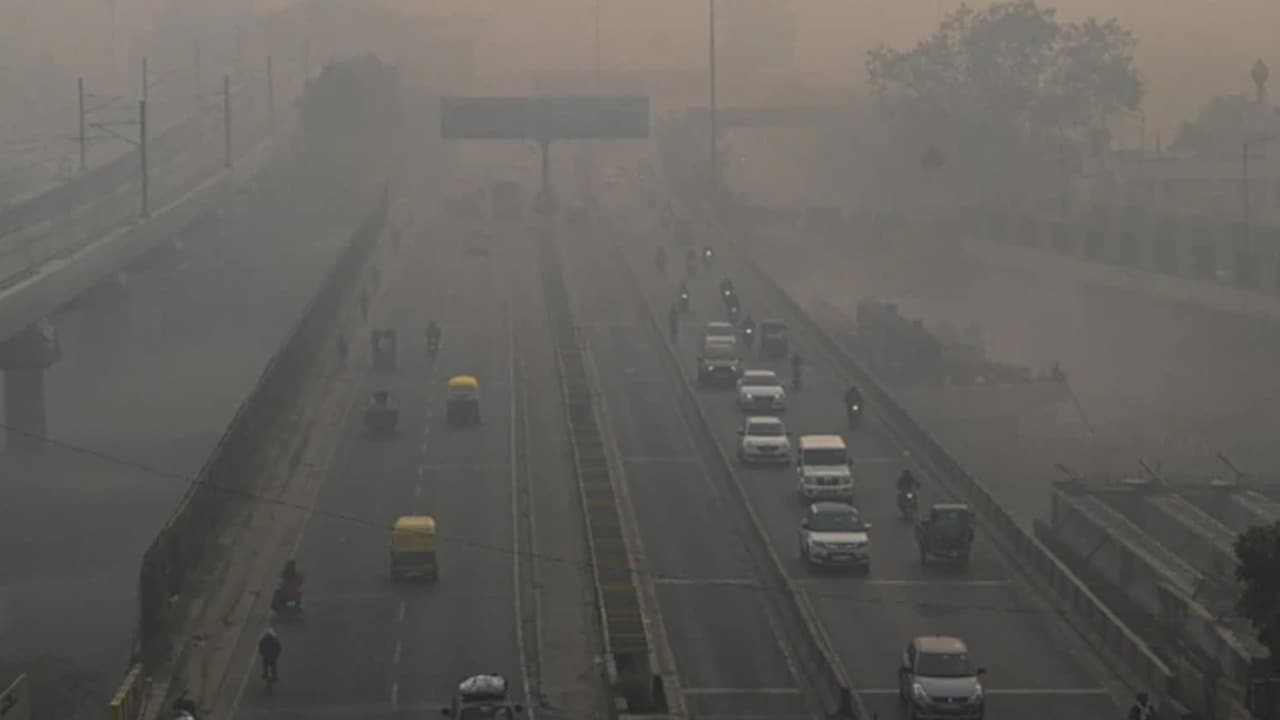- Home/
- What's Polluting Delhi's Air? Major Culprits Behind NCR's Toxic Smog
What's Polluting Delhi's Air? Major Culprits Behind NCR's Toxic Smog

The government has enforced stricter anti-pollution measures in Delhi and the NCR as air quality plunged to "severe" levels this week. The Commission for Air Quality Management invoked Stage 3 of the Graded Response Action Plan (GRAP) on Tuesday, banning non-essential construction and restricting industrial activities using polluting fuels.
The Air Quality Index (AQI) at several stations in Delhi crossed 400, far above the "good" threshold of 50, as per Central Pollution Control Board data. The worsening air quality also triggered public outrage, with a rare protest at India Gate over the weekend where dozens demanding cleaner air were detained.
Satellite data indicates a sharp rise in stubble burning across northern India-one of the recurring factors behind Delhi's toxic winter smog. Authorities say the current steps aim to curb further deterioration, but pollution remains a persistent challenge for the capital and its surrounding regions during this season.
Key Pollution Sources: The problem stems from a mix of persistent local emissions and seasonal events.
Primary Year-Round Local Sources
Vehicular Emissions: Consistently a leading source of pollution in Delhi, contributing significantly to levels of PM2.5, PM10, and nitrogen oxides (NOx). The high density of private vehicles and heavy commercial traffic are major factors.
Dust: Road dust and fine particles generated from extensive construction and demolition activities are substantial contributors to airborne particulate matter.
Industrial Pollution: Industries, including brick kilns and thermal power plants within and surrounding the NCR, continue to emit significant pollutants like sulfur dioxide (SO2) and particulate matter.
Biomass and Waste Burning: Open burning of solid waste, garbage, and biomass (wood, cow dung) for domestic heating or disposal adds considerably to the pollution load, particularly during cooler months.
Major Seasonal Regional Sources
Agricultural Crop Burning: During the post-monsoon period (October-November), the practice of burning agricultural residue (stubble) in neighboring states like Punjab and Haryana is a primary episodic source, with north-westerly winds carrying dense smoke into Delhi NCR. This can account for up to 45% of Delhi's pollution on peak days.
Adverse Weather Conditions: Delhi's landlocked geography and winter meteorology, including low wind speeds and temperature inversions, trap pollutants near the surface, leading to severe smog episodes.
Bottom Line
Air pollution in Delhi-NCR in 2025 is driven by a combination of heavy vehicle traffic, construction and dust, domestic biomass use, industrial emissions, seasonal crop-burning and unfavourable weather trapping pollutants. The result: years of healthy life lost and a health crisis in waiting.
(With inputs from agencies)
Latest Stories
- Reported by Ishika Verma | Saturday December 06, 2025
New Delhi: Two days after Chief Minister Rekha Gupta held a high-level review meeting, the Delhi government on Saturday formally notified the constitution of a new Expert Group on Air Pollution Mitigation and a High-Level Implementation Committee.
- Saturday December 06, 2025 , New Delhi
Delhi Chief Minister Rekha Gupta on Thursday claimed that the capital had "celebrated Diwali and maintained air quality."
- Reported by Ankita Tiwari | Friday December 05, 2025 , New Delhi
Every winter, Delhi's air turns toxic, and this year is no exception. After the monsoon, pollution levels rise, but the real crisis begins when temperatures plunge.
- Indo-Asian News Service | Friday December 05, 2025 , New Delhi
Amid continuing poor air quality in the national capital, doctors on Friday noted that air pollution can not only harm your lungs or lead to cardiac illness but can also heighten anxiety and trigger panic-like symptoms.
- Reported by Ishika Verma | Thursday December 04, 2025 , New Delhi
The Delhi government on Thursday rolled out its "toughest-ever" anti-pollution drive in the capital -- deploying mist spray technology, tightening enforcement, and warning officials of strict action.
................................ Advertisement ................................
Latest Videos
Opinion
Blog | Well Done, Delhi. You've Turned Lung Sacrifice Into A Badge Of HonourSaikat Kumar Bose
Monday November 10, 2025Till some years back, Delhiites would ask angry questions to those in power about the capitals annual tryst with toxic air. This has changed. Those in the driving seat dont see the need to answer now.
Opinion | Why Indians Have Just Given Up On Air Pollution CrisisTanushree Ganguly
Friday December 20, 2024While some may argue that people in Delhi are now more aware of air pollution than they were a decade back, my rebuttal would be that awareness does not mean that people are concerned.
Opinion | You Must Outrage Over Filthy Air More Than Once A YearJyoti Pande Lavakare
Tuesday December 10, 2024Delhi welcomed us with monsoon rains and mangos. We were home. Fast forward a couple of years, in the winter of 2012, I found myself in denial about something other parents, mostly expats, were calling toxic air.
Opinion | Delhi's Air Pollution Situation Is Like A Bad MarriageNishtha Gautam
Friday November 22, 2024On a good day, such as today, the AQI reading in Delhi is 407. We are jubilant at the sickly sunshine trickling through the slightly dissipated smog. At least its not 1600.
दिवाली... पराली... सियासी जुगाली!Ashwini kumar
Monday November 18, 2024दिल्ली-एनसीआर में प्रदूषण का समाधान तो आज तक मिला नहीं. हर साल चिंतित होकर हम-आप सांसों की तकलीफ के साथ-साथ दिल और ब्लड प्रेशर के मरीज भी क्यों बनें?


















